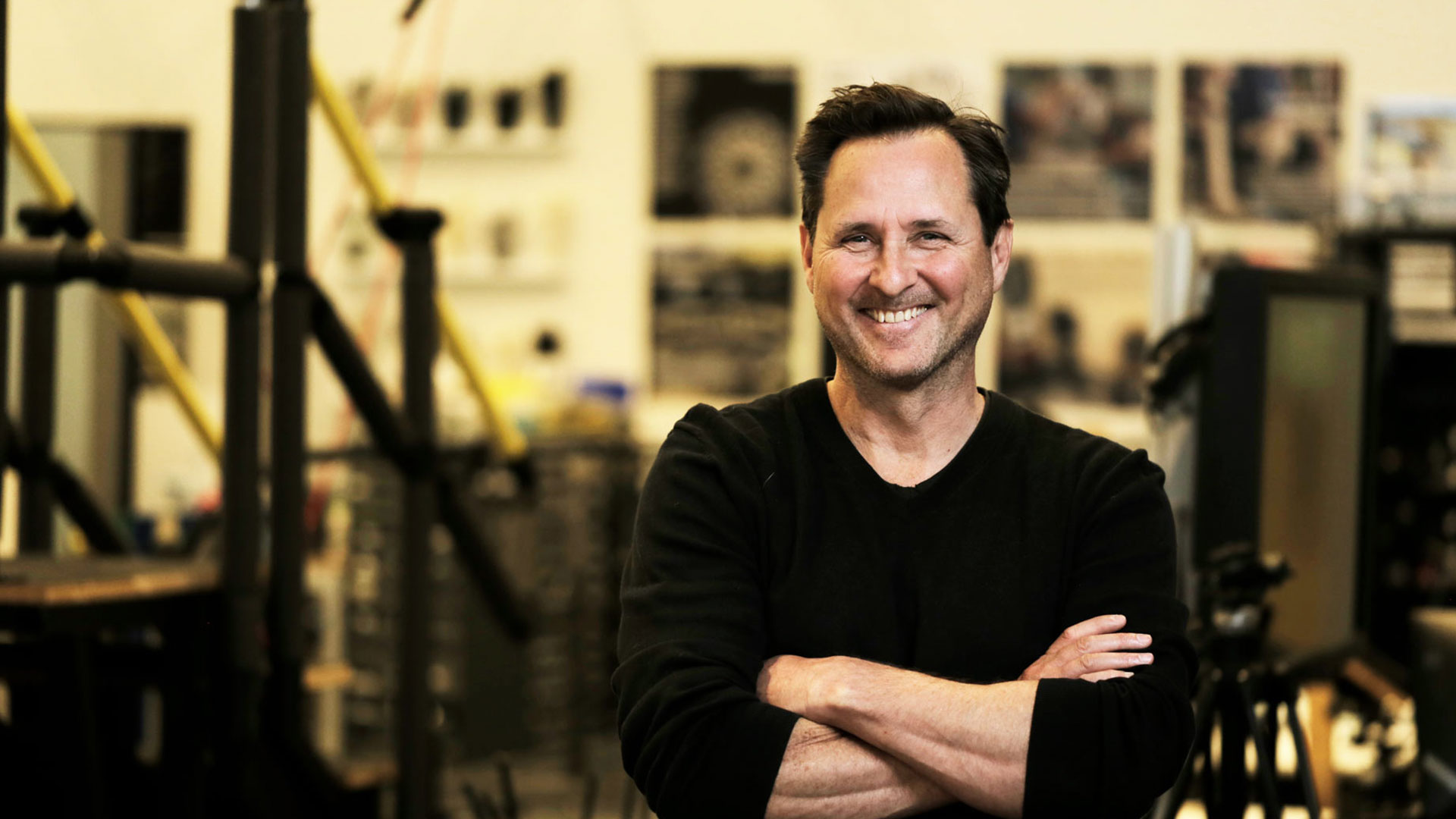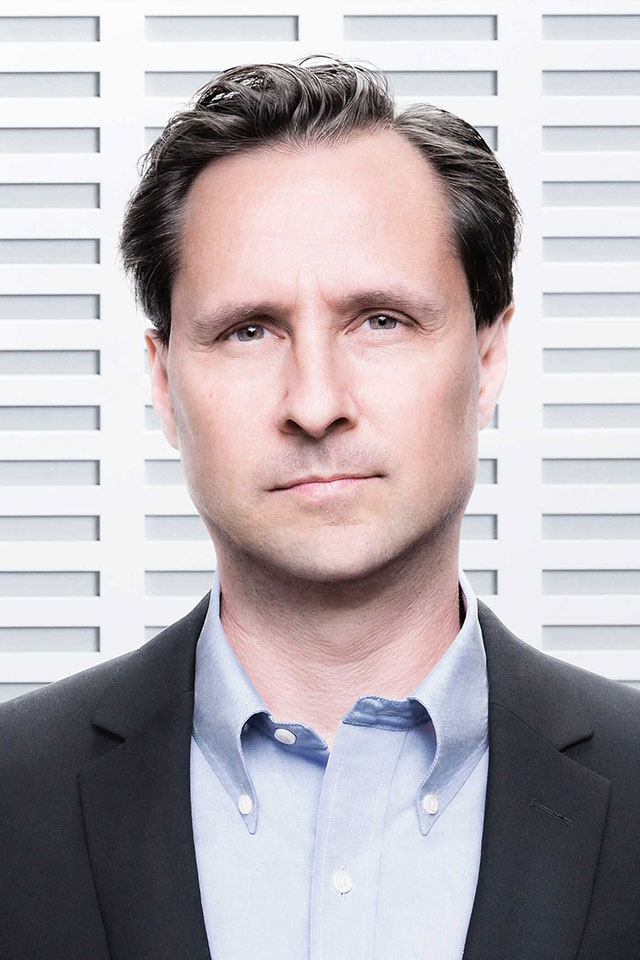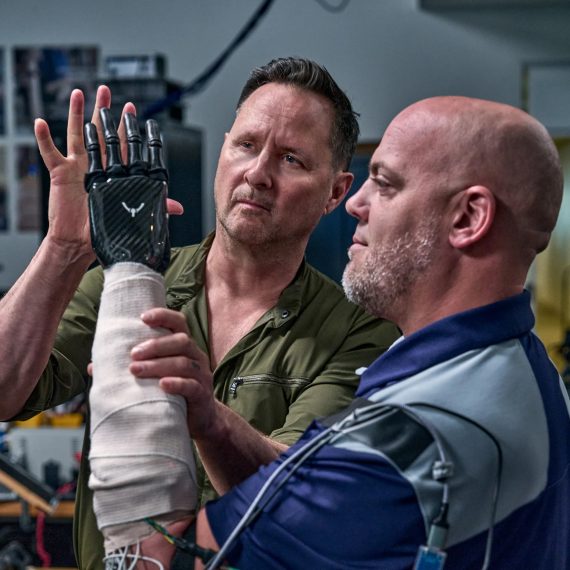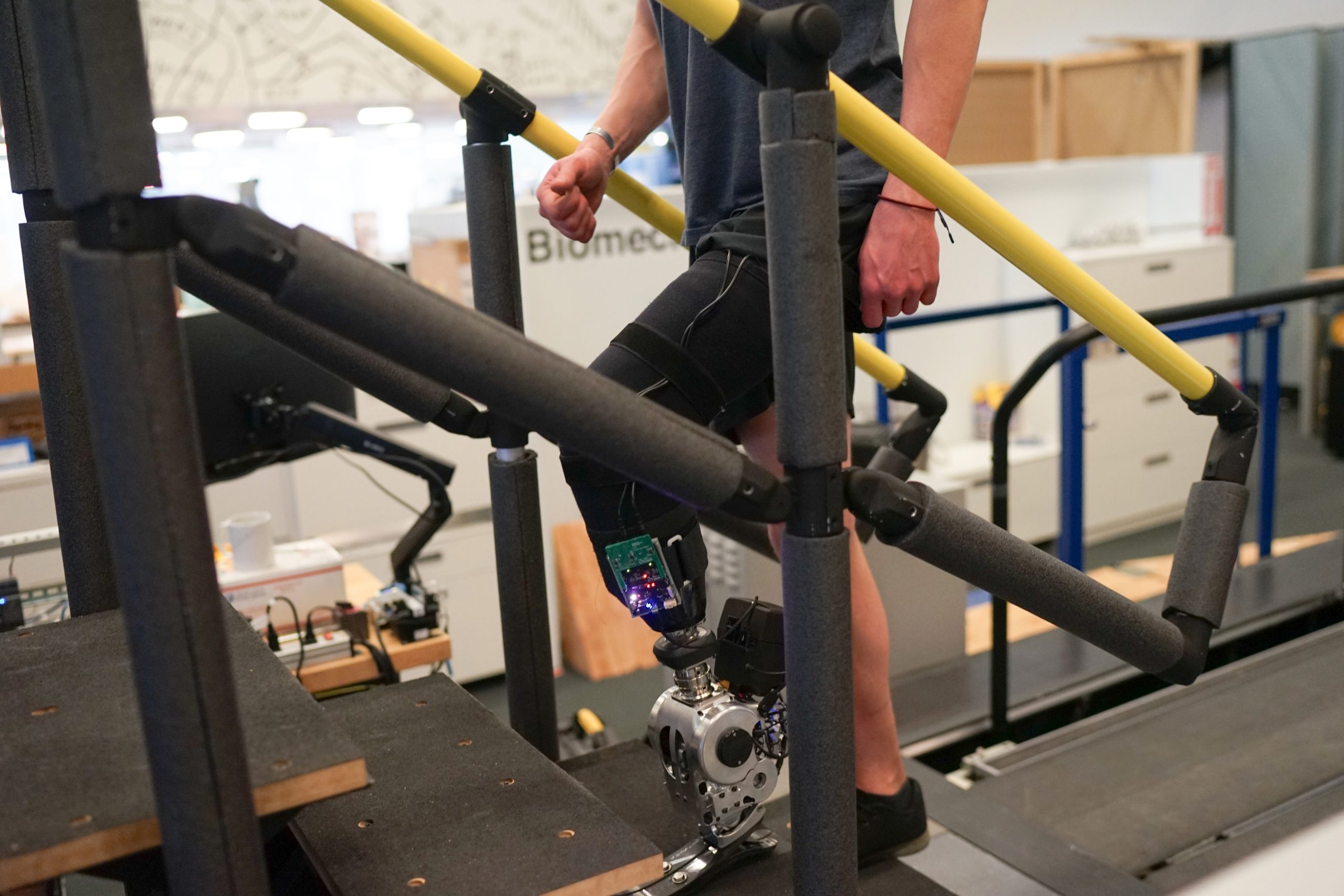Revolutionizing Bionics
Hugh Herr creates bionic limbs that emulate the function of natural limbs. In 2011, TIME magazine named him the “Leader of the Bionic Age” for his revolutionary work in the emerging field of biomechatronics, an emerging field that marries human physiology with electromechanics.
Herr, who lost both of his legs below the knee to a climbing accident in 1982, has dedicated his career to the creation of technologies that push the possibilities of prosthetics. As co-director of the K. Lisa Yang Center for Bionics, Herr seeks to develop neural and mechanical interfaces for human-machine communications; integrate these interfaces into novel bionic platforms; perform clinical trials to accelerate the deployment of bionic products by the private sector; and leverage novel and durable, but affordable, materials and manufacturing processes to ensure equitable access of the latest bionic technology to all impacted individuals, especially to those in developing countries.
Herr’s story has been told in the National Geographic film, Ascent: The Story of Hugh Herr as well as the PBS documentary, Augmented.
More Research
Some of Herr’s key innovations include:
- the first autonomous leg exoskeleton to lower human metabolism, increase preferred speed, and reduce musculoskeletal stress for human walking.
- a novel surgical procedure for limb amputation and neural interfacing that allows persons with limb loss to control their synthetic limbs through thought and experience natural proprioceptive sensations from the synthetic limb.
- a powered ankle-foot prosthesis that has been clinically shown to allow amputees to walk with normal levels of speed and metabolism.
Herr’s team is now evaluating its novel bionic limbs for clinical efficacy in people with amputations at various levels. The limbs’ artificial sensors enable brain-controlled movements with natural touch and movement sensations.
The team is also advancing a technology to help stroke survivors and people with age-related musculoskeletal joint disease gain muscle strength. The system uses proprioceptive sensing and biophysical controllers to modulate artificial muscle interfaces that are attached to the body. The researchers expect that it will enable people with certain leg weaknesses to vary their walking cadence and move across irregular terrains with typical energy exertion and a natural gait
To restore movement function in people with paralyzed limbs caused by spinal cord injury, the team has embarked on a cross-disciplinary collaboration with McGovern’s Ed Boyden and Robert Langer to develop a platform that will incorporate, among other elements, a scaffold—or engineered “nerve bridge”—to reproduce the conductivity and mechanical properties of the original tissue and muscle-control interfaces to provide computer-modulated muscle stimulation using optogenetics, which enables neuronal activity to be controlled with light.
Herr’s lab has also launched the Sierra Leone Prosthetic Project to design and implement a health-system model to support the country’s prosthetic sector and expand access to prosthetic devices.
Biography
Herr earned his MS in mechanical engineering at MIT and his PhD in biophysics at Harvard University. He worked as a postdoctoral researcher at the MIT Leg Lab, part of the MIT Artificial Intelligence Lab, which is dedicated to studying legged locomotion and building dynamic legged robots that walk, run, and hop like their biological counterparts. In 2000, Herr took over as director of the lab, which eventually became the Biomechatronics Group within the Media Lab. He was named co-director of the K. Lisa Yang Center for Bionics in 2022 and joined the McGovern Institute as an associate investigator that same year.
Honors and Awards
- 2022 – Genius Award, Liberty Science Center
- 2016 – Award for Technical & Scientific Research, Princess of Asturias Foundation
- 2014 – American Ingenuity Award in Technology, Smithsonian Institute
- 2014 – Innovator of the Year, R&D Magazine
- 2014 – Inventor of the Year, Intellectual Property Owners Education Foundation
- 2007 – Heinz Award in Technology, the Economy and Employment, Heinz Family Foundation
- 2007 – Top Ten Inventions in Health (EmPower ankle-foot prosthesis), TIME
- 2005 – Breakthrough Leadership Award, Popular Mechanics
- 2004 – Top Ten Inventions in Health (Rheo prosthetic knee), TIME






